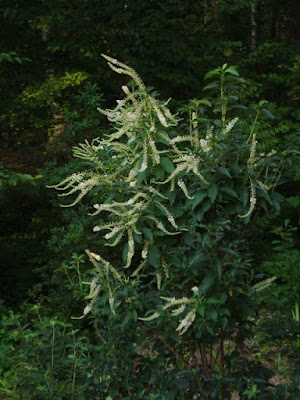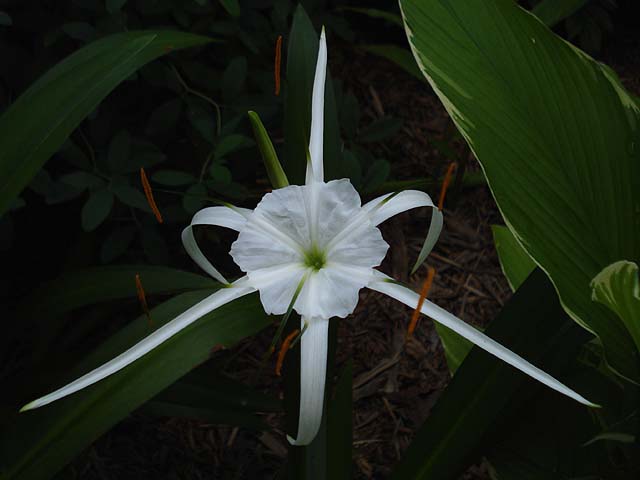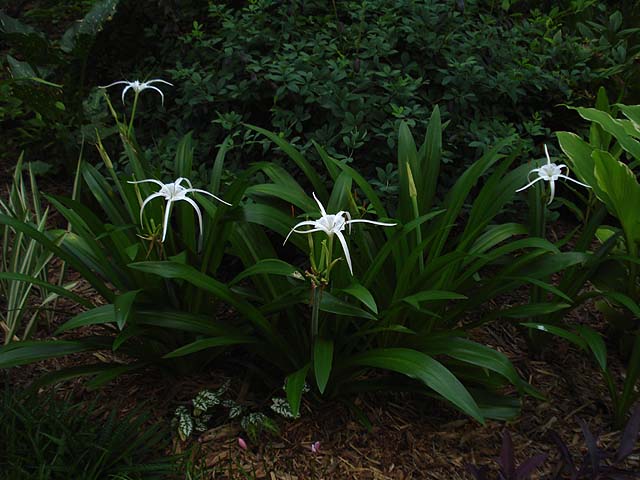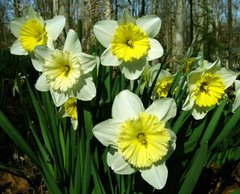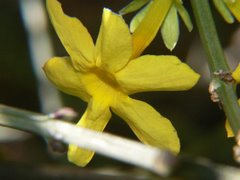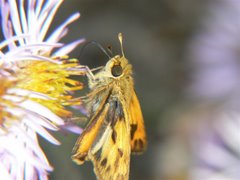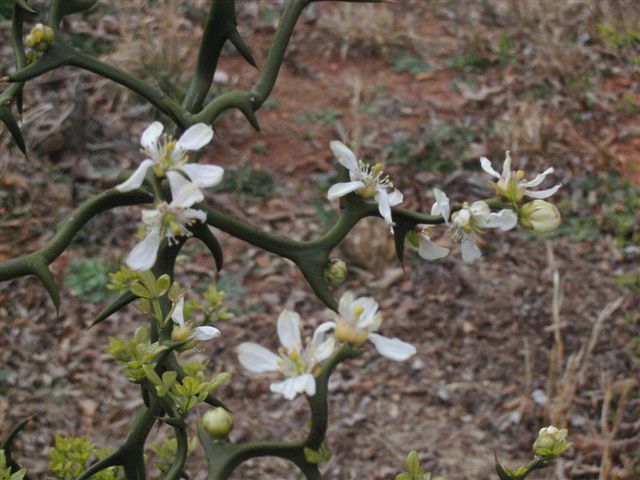Because I want others to enjoy them, and also because I'm curious about where they'll grow, I've sent Crinums to relatives living in the Northeast. Last week I traveled to Greenport, New York to visit family, stopping in Hershey, Pennsylvania along the way, and got to check in on some of the bulbs I've sent, some just recently planted and others that are now fully established.
At the first stop, in Hershey, Pennsylvania, the Crinum bulbispermum that I sent several years ago was in bloom. While not in bloom yet, both Crinum 'Seven Sisters' and Crinum 'Mrs. James Hendry' survived last winter in the ground, and Crinum × powellii 'Album' and Crinum 'Cecil Houdyshel' are new additions this spring. All of these are planted in a sheltered location in front of the house with a southern exposure.
Crinum bulbispermum in Hershey, Pennsylvania

At the next stop, in Greenport, New York, Crinum 'Cecil Houdyshel' was in bloom and Crinum 'Mrs. James Hendry' was preparing to bloom with a scape already up. Filling out the group was Crinum × powellii 'Album', a new addition this spring. 'Cecil Houdyshel' and 'Mrs. James Hendry' have survived several winters in this sheltered location against a south facing wall, backed by a hedge and then a two story building, all of this about 50 feet (15m) from Greenport Harbor.
Crinum 'Cecil Houdyshel' in Greenport, New York

C. × powellii 'Album', 'Cecil Houdyshel', and 'Mrs. James Hendry'

Crinums by the shore

Note that in both gardens the bulbs and the sites where they were planted were chosen carefully. All of the bulbs have Crinum bulbispermum in their ancestry and the sites have protected southern exposures and, in the case of the Greenport garden, very close proximity to a temperature moderating, large body of water. So far it's working, the plants are surviving the winters and are growing and blooming well. A really nasty winter could wipe them all out, but the results so far are encouraging.
While I expected to see Crinums at our first two stops because I sent them there, I did not expect to see Crinums in the heart of New York City, but in Rockefeller Center I found the large, red-foliaged Crinum procerum splendens used in combination with Alocasias, Alpinias, bananas, palms, and bromeliads in a really attractive summer display. Obviously none of these can survive a New York City winter outdoors, but I was happy to see them on display in such a prominent location during our summertime visit.
Tropical landscape at Rockefeller Center

Crinum procerum splendens with Alocasia, Musa, and bromeliads


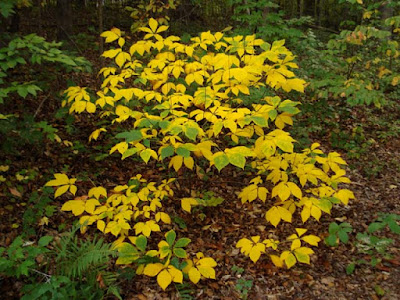



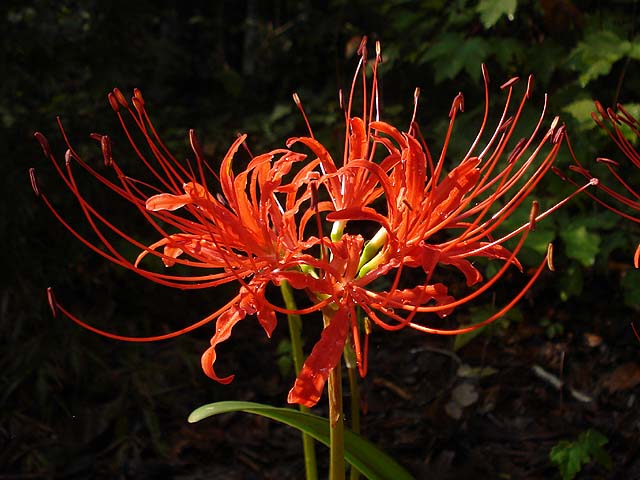
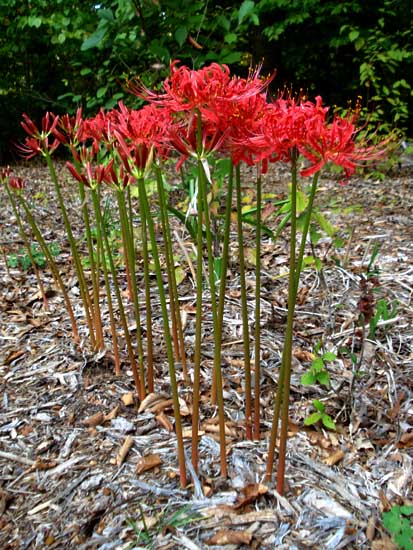


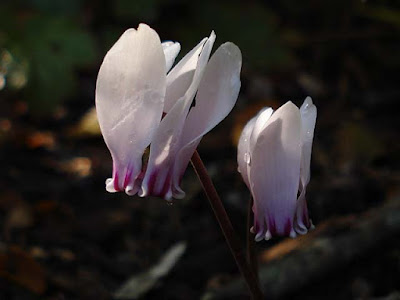
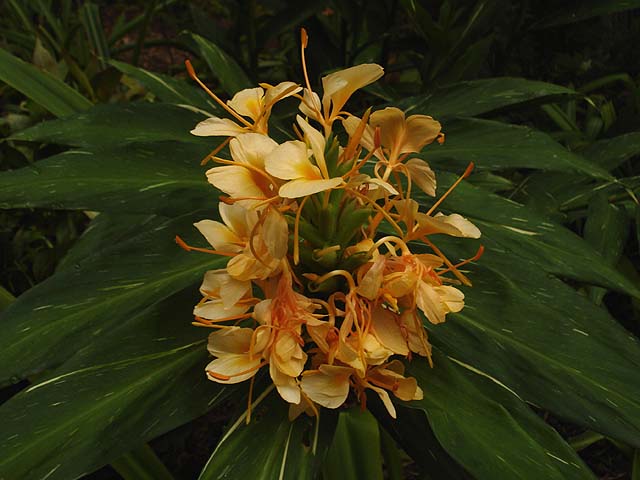
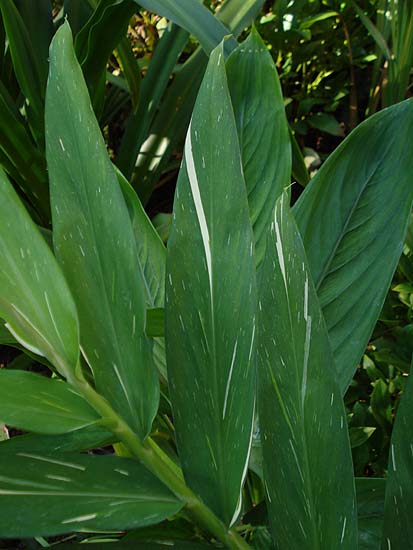
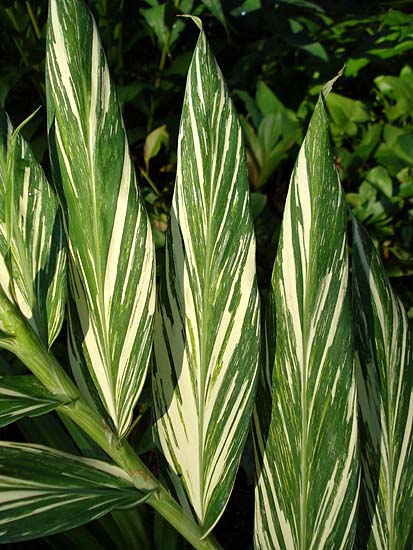
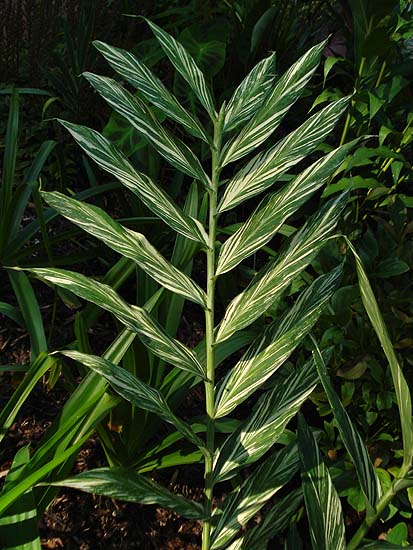
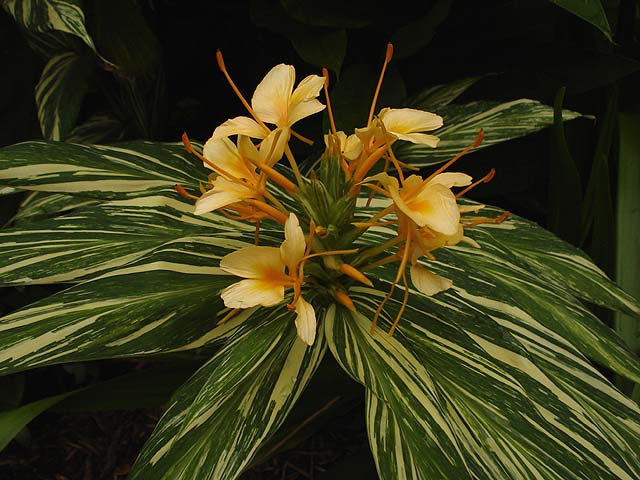
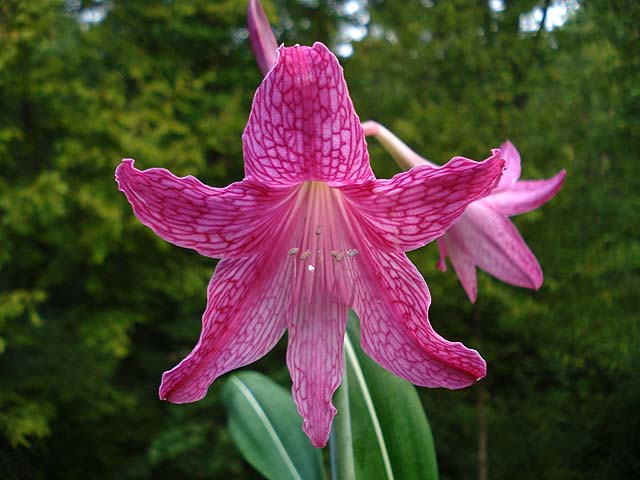
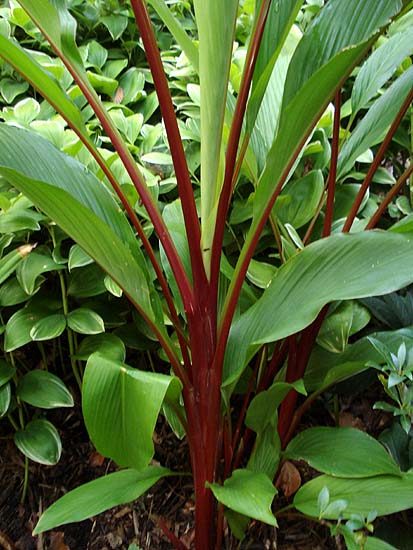
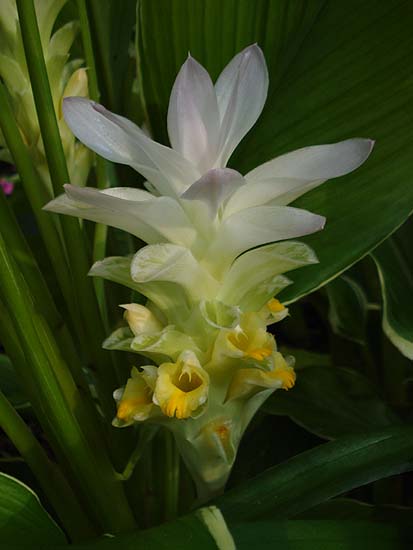
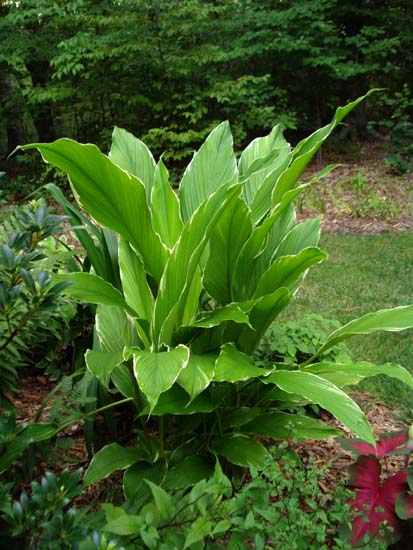



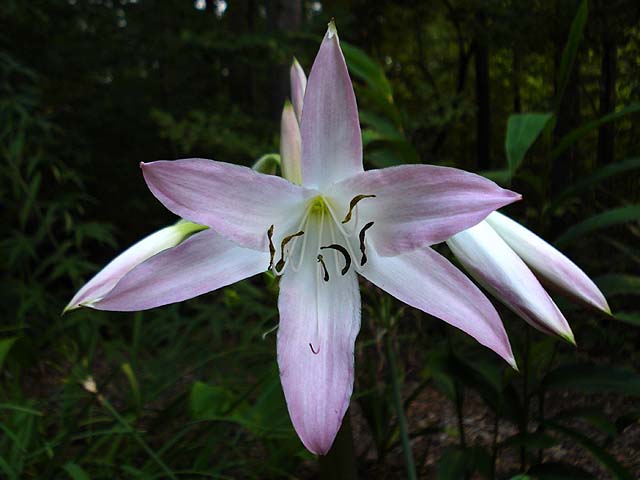
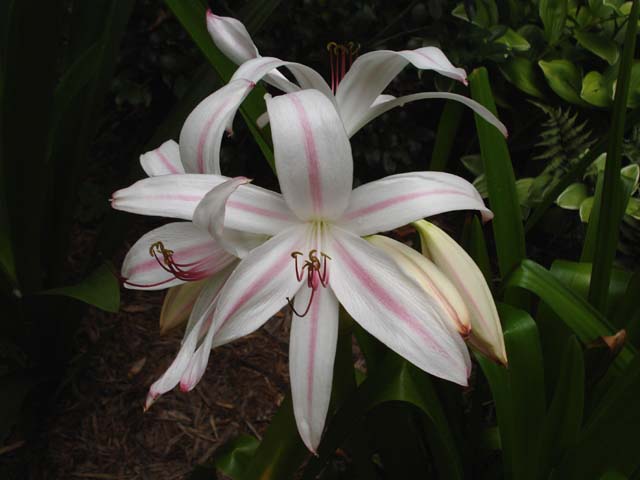
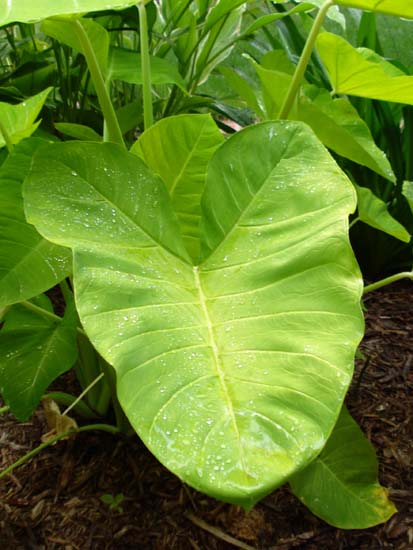

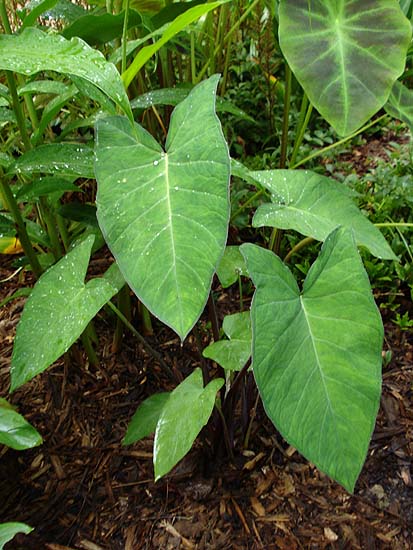
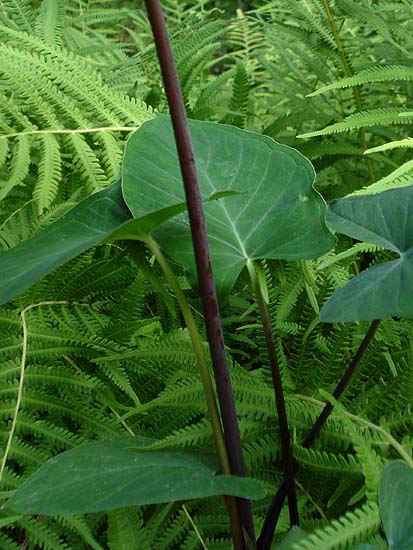
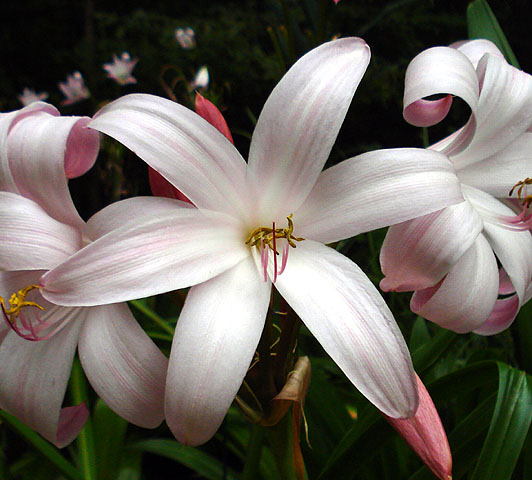
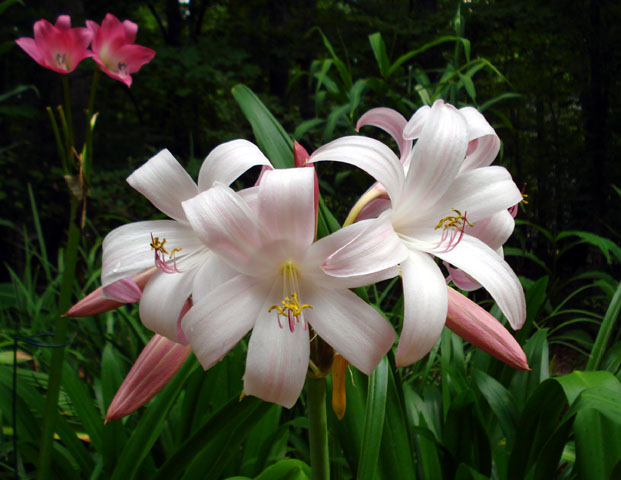
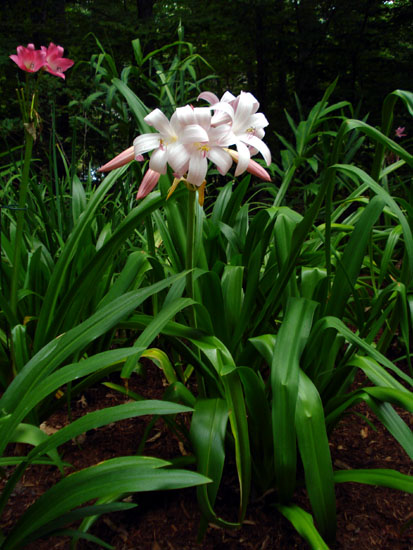
 In Florida, from the panhandle to destinations south, it is as ubiquitous as cabbage palmettos and Cycas revoluta. In those locals it never gets cold enough to kill the stems so the plant meanders about the landscape as one part vine and one part shrub.
In Florida, from the panhandle to destinations south, it is as ubiquitous as cabbage palmettos and Cycas revoluta. In those locals it never gets cold enough to kill the stems so the plant meanders about the landscape as one part vine and one part shrub. 
 Each winter the stems die to the ground, however the clumps that get enough sun do slowly increase and look fantastic. Cool as it may sound, the leaves don't even "fry" until it gets below 25F. So, often mine are still looking good on New Years.
Each winter the stems die to the ground, however the clumps that get enough sun do slowly increase and look fantastic. Cool as it may sound, the leaves don't even "fry" until it gets below 25F. So, often mine are still looking good on New Years.